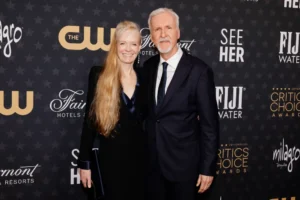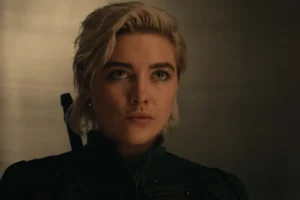by: uknown
I grew up with film. I understand how it can make you feel nostalgic. It stands for a halcyon past, like memories of your mother’s cooking. Celluloid is a fantastic, romantic medium. But technology is evolving fast, and in exciting ways. And that’s the reason I wanted to produce and present Side by Side, a documentary that asks how film-making is changing in the digital age.
The film tracks the losses and gains of Hollywood’s move to digital cinema. Over a year between 2010 and 2011 director Chris Kenneally and I spoke to dozens of film-makers about working in an industry that is in the process of reinventing itself. We heard how digital had enabled the imagination of directors such as James Cameron, David Fincher and David Lynch – helping them create new worlds in which to develop their style. We also heard from directors such as Christopher Nolan, who was – at that point at least – unconvinced that digital could match up to the quality he had come to expect from film stock.
As the title suggests the documentary doesn’t argue for one format over another. Our goal was to explore the spectrum of opinion in the industry at a time when both film and digital are still used to shoot. We didn’t have an agenda. In fact, Chris and I were a good representation of the film itself: I went into the project wondering what we’d lose by going digital. Chris was more interested in what was to gain.
I did my first video shoots way back in the 90s. Stuff on the street based on a friend’s scripts. My first experience with digital as a professional actor was on Richard Linklater’s A Scanner Darkly. I realised pretty quickly that digital had changed the rhythm of film-making. We no longer had to stop every 10 minutes to change the reel. The director could keep filming without worrying about the ticking clock costing so much. You still had to stop to change the card, but breaks didn’t happen anywhere near as frequently. It meant that we could shoot for as long as we wanted and afforded us actors more improvisational opportunities. That’s not to say longer takes were always a joy. I sometimes had to say “Let’s not do it again. Let’s take a breath here – it’s not going to get better, OK?”
For some film-makers picking digital is an aesthetic, as well as a practical, choice. Directors such as Robert Rodriguez and Steven Soderbergh told me they had an ambition for a certain look and realised that only digital cameras could achieve it. Digital has also democratised the film-making process. The availability of cheap, high-quality video has helped increase the quality of low budget film-making (this is certainly true of the expansion in documentary film-making, where digital has enabled people to hit the streets with an affordable means of filming). Where we watch our films is also part of the digital story. Movies are now streamed from the cloud, watched on iPads. They’re no longer always shown on the big screen.
The rise of digital technology has prompted a lot of debate about the “death of film”. If you’d asked me six months ago if we were at that point I’d have said the situation was dire. Fuji announced it was not going to produce commercial stock any more, companies such as Panavision and Arri have stopped making new film cameras. But it’s unlikely that film will completely vanish, at least in the near future. I wouldn’t call it a backlash against digital, but there is a significant body of directors still using film for image acquisition. It’s important that they have the tools to make films in the way they want to. I’m certainly much less worried about the fate of celluloid than I was when I started making the documentary.
The debate isn’t about whether digital is better than celluloid. It’s about giving an artist the choice. Side by Side ultimately arrives at the point where the distinction is about the individual’s style. It’s not pining for the past, nor championing a digital revolution. It’s arguing that it’s an exciting time for the industry. It shows us where Hollywood has come from, where we are now and where we might be going.
Keanu Reeves was speaking to Henry Barnes. Side by Side is released in UK cinemas through Axiom Films on 15 February
















+ There are no comments
Add yours